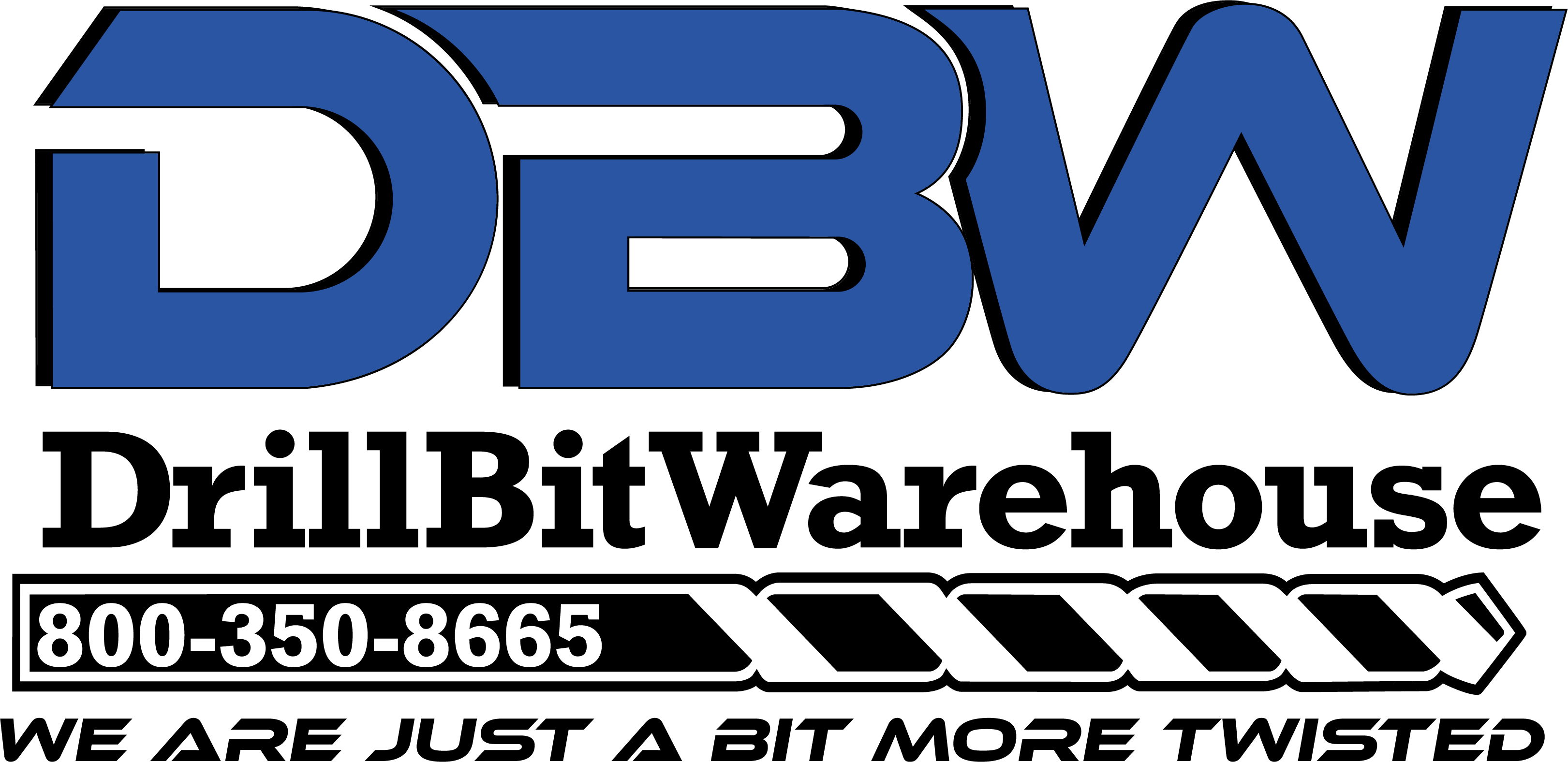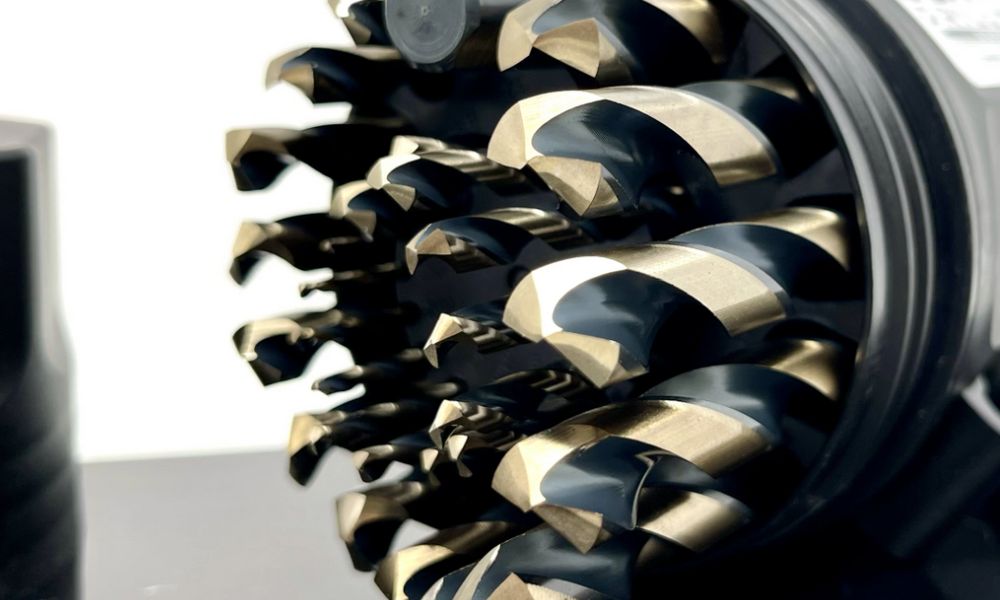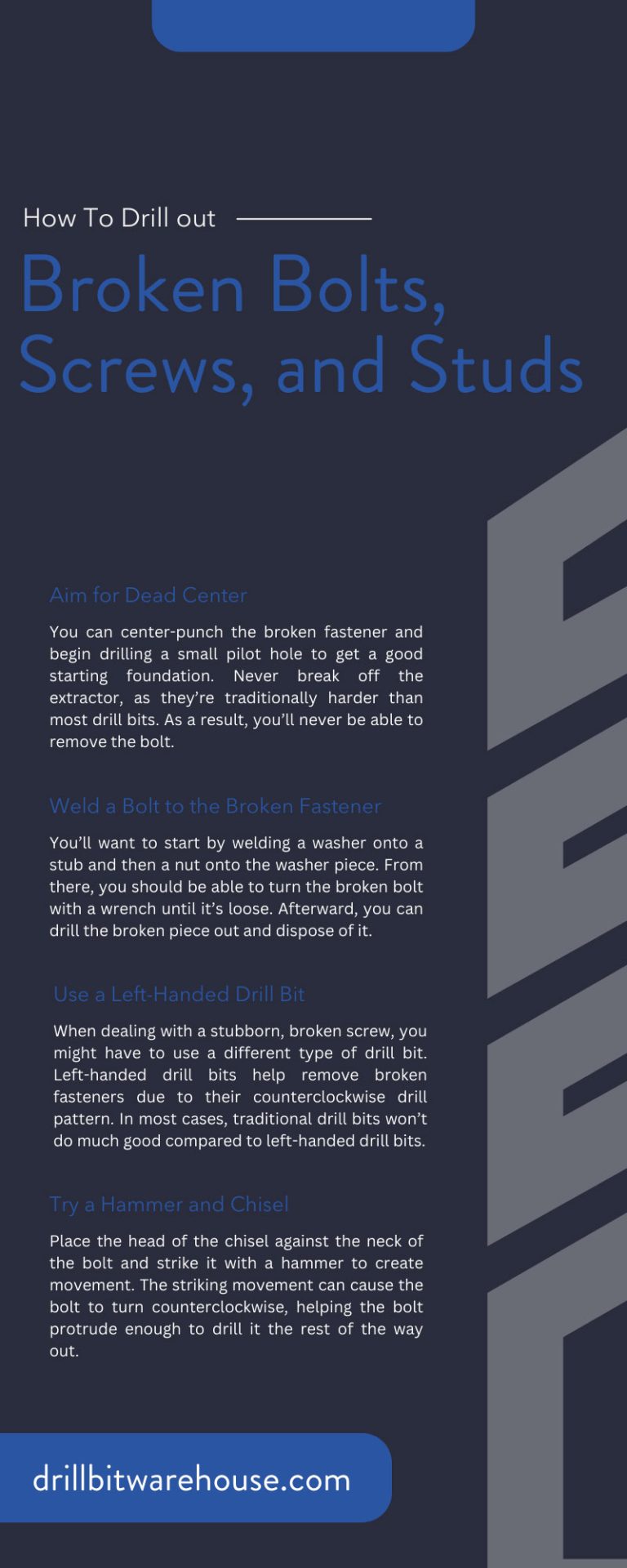If you come across a broken bolt, stud, or screw during your job, it pauses the project you and your team are working on. You have no choice but to remove it so no catastrophic damage or injuries occur. Even more so, removing stubborn fasteners can take a considerably long time, so you’ll have to try numerous techniques before you make any headway.
So, start with simpler removal techniques to see if they made any impact, then move towards more complicated techniques if needed. Here are some tips for drilling out bolts, screws, and studs and potential reasons why your fastener broke in the first place. The success of removing damaged fasteners depends on your tools, the material it’s attached to, the fastener types, and your elbow grease.
How Do Bolts and Screws Break?
Before removing your bolts, screws, or studs, it’s crucial to know how they got broken or damaged. It can result from multiple instances, such as environmental factors or the pressure used to attach them. The better you understand why they broke and got damaged, the better the attempt at removal.
Fastener Corrosion
If you’ve begun to see considerable build-up or rust on your bolts and screws, it could be from corrosion. Corrosion results from your fasteners getting exposed to incompatible substances, including oxygen, metal products, and naturally occurring chemicals.
Automotive industries are among the most common environments where bolts and fasteners become more susceptible to chemical corrosion. Fasteners getting exposed to engine oils or fluid leaks can deteriorate over time. Incompatible metal or galvanic corrosion can occur during mechanical, construction, or mining applications, despite being rare. Prevention is the best way to reduce the effects of corrosion, especially for specific fastener types in pre-applications.
Bolt Locking
Another reason fasteners can break or wear down is from bolt locking. It’s a situation where bolts encounter large amounts of vibration, creating an uneven amount of stress and resulting in breakage. For instance, total control loss in a shift fork can result from vibrations either loosening a bolt or complete breakage.
If you’re working with high-vibration situations, bolts and fasteners should come with locking nuts, washers, cotton pins, wire wraps, and other fasteners for a stable hold. These fasteners can give you peace of mind without the fear of vibrations causing degradation to your fastener quality.
Fastener Fatigue
Fatigue failure in fasteners can result from not being appropriately tightened or loosened throughout their service life. Fasteners can experience a tremendous amount of fatigue throughout their use, thus resulting in a gradual decrease in longevity. Fatigue can come from preloading and servicing loading applications when enough force gets applied to loosened joints, resulting in bending stresses that weaken the fastener.
If you’re worried about your fasteners experiencing fatigue failure, you should replace them every two years. This is imperative if you work with equipment exposed to stress factors, such as stamping machines and modeling equipment.
Overstressing
All bolts have a maximum load they can bear before losing their strength. Overstressing is the displacement of overbearing loads on bolts, resulting in bolt breakage or damage. Ensuring you practice load consideration will ensure the bolts’ longevity and drastically improve their lifespan.
There are a few different types of bolt stress: preloading, tensile loading, and service loading. Preloading is the internal stress to keep the bolt joints intact, while service loading is the external force of the joint material. Tensile loading is the static stress that pulls the bolts’ internal and external sections separately. Ensure you don’t tighten or twist fasteners too often to prevent shortening their lifespans.
Tips for Removing Broken Fasteners
When you come across a broken bolt, screw, or stud, learning to remove them can save you hours of time and hefty repair costs. Let’s review the different tips for removing broken fasteners appropriately.
Aim for Dead Center
When you’re about to remove a broken fastener, you’ll want to focus as dead center as possible in the fastener hole. Depending on the nature of the damage, it can become quite challenging and time-consuming.
You can center-punch the broken fastener and begin drilling a small pilot hole to get a good starting foundation. Never break off the extractor, as they’re traditionally harder than most drill bits. As a result, you’ll never be able to remove the bolt.
Weld a Bolt to the Broken Fastener
Welding is a valuable method for removing broken bolts from hard-to-access places. If you have access to welding equipment, you can easily weld a nut onto the broken sheath. You’re rebuilding the bolt and giving it an object to grab onto, which results in easier turning.
You’ll want to start by welding a washer onto a stub and then a nut onto the washer piece. From there, you should be able to turn the broken bolt with a wrench until it’s loose. Afterward, you can drill the broken piece out and dispose of it.
Use a Left-Handed Drill Bit
When dealing with a stubborn, broken screw, you might have to use a different type of drill bit. Left-handed drill bits help remove broken fasteners due to their counterclockwise drill pattern. In most cases, traditional drill bits won’t do much good compared to left-handed drill bits.
Try a Hammer and Chisel
A stubborn, broken fastener might need additional help from a hammer and chisel. If there isn’t enough of a stub sticking out for your drill to access, a hammer and chisel can help turn the fastener in the direction you need.
Place the head of the chisel against the neck of the bolt and strike it with a hammer to create movement. The striking movement can cause the bolt to turn counterclockwise, helping the bolt protrude enough to drill it the rest of the way out.
When dealing with broken bolts, screws, and other types of hardware, you shouldn’t struggle with removing them. Our high-quality drill bits and drill bit sets at Drill Bit Warehouse give you premium quality with 135-degree split points that will outlast the competition. Our HSS drill bits offer a long-lasting performance for many professions, such as locksmiths, plumbers, electricians, contractors, mechanics, and more. If you want to know more about our drill bit products, our dedicated and experienced team is here to help. With over 40 years of servicing multiple hands-on industries, our high-quality drill bits are easy to use and cut through many materials with minimal effort.





